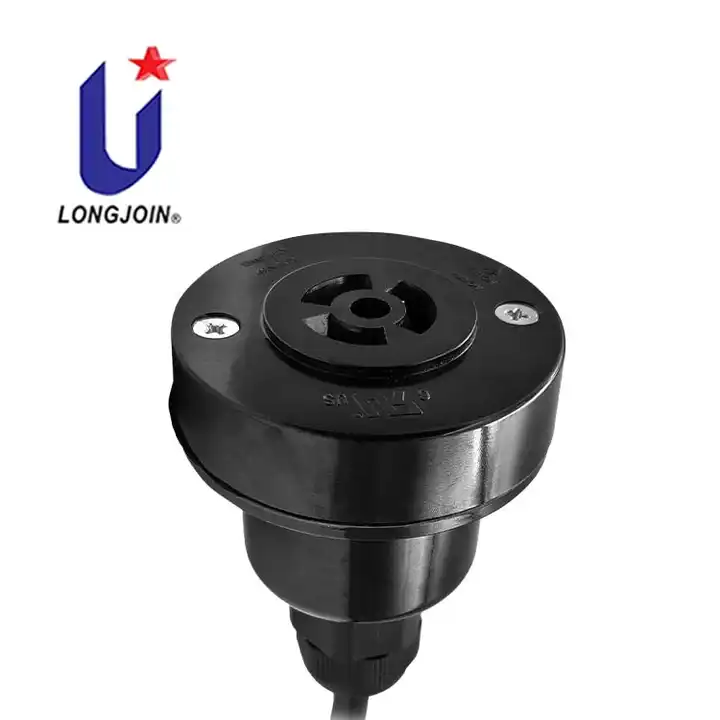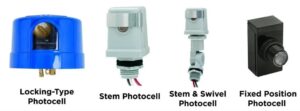What Factors Should I Consider When Selecting A Photocontroller Based On Lux Value Requirements?
Photocontrollers, or photocells are devices used to automatically control the illumination based on ambient light. The photocontroller you choose is important to get the desired performance and save energy. This choice requires you to consider several factors, which I will highlight in this article.
Introduction
We can broadly define our choice of photo controller based on two questions;
- What kind of performance do you require from the photocell?
- Where do you want to use the photocell?
Once we get the answers to these questions, our choice will get easier. Here are some of the factors that should be kept in mind while selecting a photo controller.
Sensitivity
Sensitivity refers to the degree of response the device gives when light falls on its surface. The relation between light falling on the surface and the resulting signal is sensitivity. You may find photocells with three different sensitivity ranges. So, are you wondering what should I choose? See the table for suggestions.
High Sensitivity | Medium Sensitivity | Low sensitivity |
Ideal for areas with dim light, and areas where light changes frequently Gives a precise control over lighting Used for security lighting, or in areas with safety concerns | Suitable for most general outdoor lighting applications It best performs in environments with moderate light. Is stable and responsive Used for residential areas, parking lots, and pathways. | Suitable for places with high-intensity lights. Or in areas with less frequent light changes. Provides stability, and prevents unnecessary switching of lights. Used in streets that are illuminated by other sources. |
You may also find an adjustable sensitivity photo controller. In it, you can change the sensitivity settings based on your requirements. You can customize it with seasonal changes, location, and changes in the surroundings. It is best suitable for areas where lux value requirements change over time. It would give you precise control over the lighting system.
Sensitivity
You may also find an adjustable sensitivity photo controller. In it, you can change the sensitivity settings based on your requirements. You can customize it with seasonal changes, location, and changes in the surroundings. It is best suitable for areas where lux value requirements change over time. It would give you precise control over the lighting system.
Lux Range
Lux is the unit of light measurement. Lux range is the specific range of light intensity required for adequate illumination in your application. You should know suitable lux levels to provide sufficient brightness in the area. For instance, roads or parking lots require higher lux ranges to provide a clear vision to the drivers. Residential areas require low lux ranges.
Response Time
You should consider the environmental conditions for the photo controller installation. It can have a significant impact on its durability, and efficiency. Areas facing extremely high or extremely low temperatures can affect the durability of photocells. In such areas, photocells with strong manufacturing, and resistant materials should be used.
Environmental Conditions
You should consider the environmental conditions for the photo controller installation. It can have a significant impact on its durability, and efficiency. Areas facing extremely high or extremely low temperatures can affect the durability of photocells. In such areas, photocells with strong manufacturing, and resistant materials should be used.
Power Consumption
You would never like to spend too much on power bills by photocontrollers. Hence, it is vital to consider the power consumed by it. Pick an energy-efficient photocontroller that requires minimal power for its operation. This way you can cut down the costs, and contribute to saving energy resources. It would also lower the negative environmental impact.
Compatibility
Make sure that the photo controller you purchase is compatible with the lighting system. The photcontroller should be suitable for your type of light fixture, whether it is LED, fluorescent, or HID lamp. It should also offer compatibility with the control systems, or automation protocols if you want to monitor it through smart devices. It ensures that your photocells function smoothly.
Reliability
Don’t go for photocells with poor manufacturing. Always make a wise decision and choose reliable photocell manufacturers. Make sure they fulfill the industry standards. It is their indicator of safety and reliability. Pick products that have a longer warranty period, and provide additional support for your photocontroller.
Types of Photocell Formats
The photocell format you require depends on the type of streetlight, or luminaire you have. Once you know this, your choice will get easier. Here are the types of photo controller formats;
NEMA
NEMA socket is an effective connector for one-part photocontrollers. It has three connections, incoming live, neutral wire, and switched outgoing. The neutral is only used to power it.
Types of Photocell Formats
The photocell format you require depends on the type of streetlight, or luminaire you have. Once you know this, your choice will get easier. Here are the types of photo controller formats;
Caption: NEMA waterproof photocell
Using a conduit you can directly mount photocells on a thread of 20mm. It is connected through wires. It is ideal if you require more than 3 connections in one place.
Caption: Conduit Wire-in digital photocontrol
Zhaga has been made with the latest advances in technology. They can fix it in a 200mm pit in the luminaire top. A Luminaire receptacle makes this fitting possible. Yo, I do not need any wires for installation, since it had a four-pin contact surface.
Caption: Zhaga book controller
Miniature photocells are usually incorporated within the light. It is directly connected to the luminaire. Special care is required for its temperature, to maintain its functionality. The temperature may exceed 100 degrees Celsius, so the material used should be resistant.
Final Thoughts!
If you have decided to purchase a photo controller, look through our collection. We have a wide range of energy-efficient photo controllers, to meet every requirement. We commit to the safety and reliability of our customers and hence provide the best-quality photocells. Make a wise decision and select from our collection of energy-efficient photo controllers!
FAQs
How long does a photocell work?
Photocells have a long lifespan. They last for several years under normal operating conditions. However, the exact lifespan can vary with usage frequency, environmental conditions, and the quality of the photocell.
What are the different types of photocells?
Different types of photocells include Cadmium Sulfide, Silicon, Photodiodes, and Phototransistors. All of them have different modes of functioning.
How do I install a photocell for low-voltage lighting?
To install a photocell for low-voltage lighting, start by turning off the power. Carefully connect the wires according to the provided instructions. Once the connections are made, securely mount the photocell, and seal any exposed connections.
How does a photcontroller work?
A photocell works by detecting changes in light intensity. When exposed to light, the photocell’s resistance changes. It affects the flow of current in a circuit. This change in current is utilized to control the activation or deactivation of a lighting system.
Conclusion
If you have decided to buy a photo controller, you should look for its reliability, sensitivity, Lux range, response time, and compatibility. It should have the least environmental impact and should be an energy-efficient photocontroller.
External Link
https://www.engineeringtoolbox.com/light-level-rooms-d_708.html






